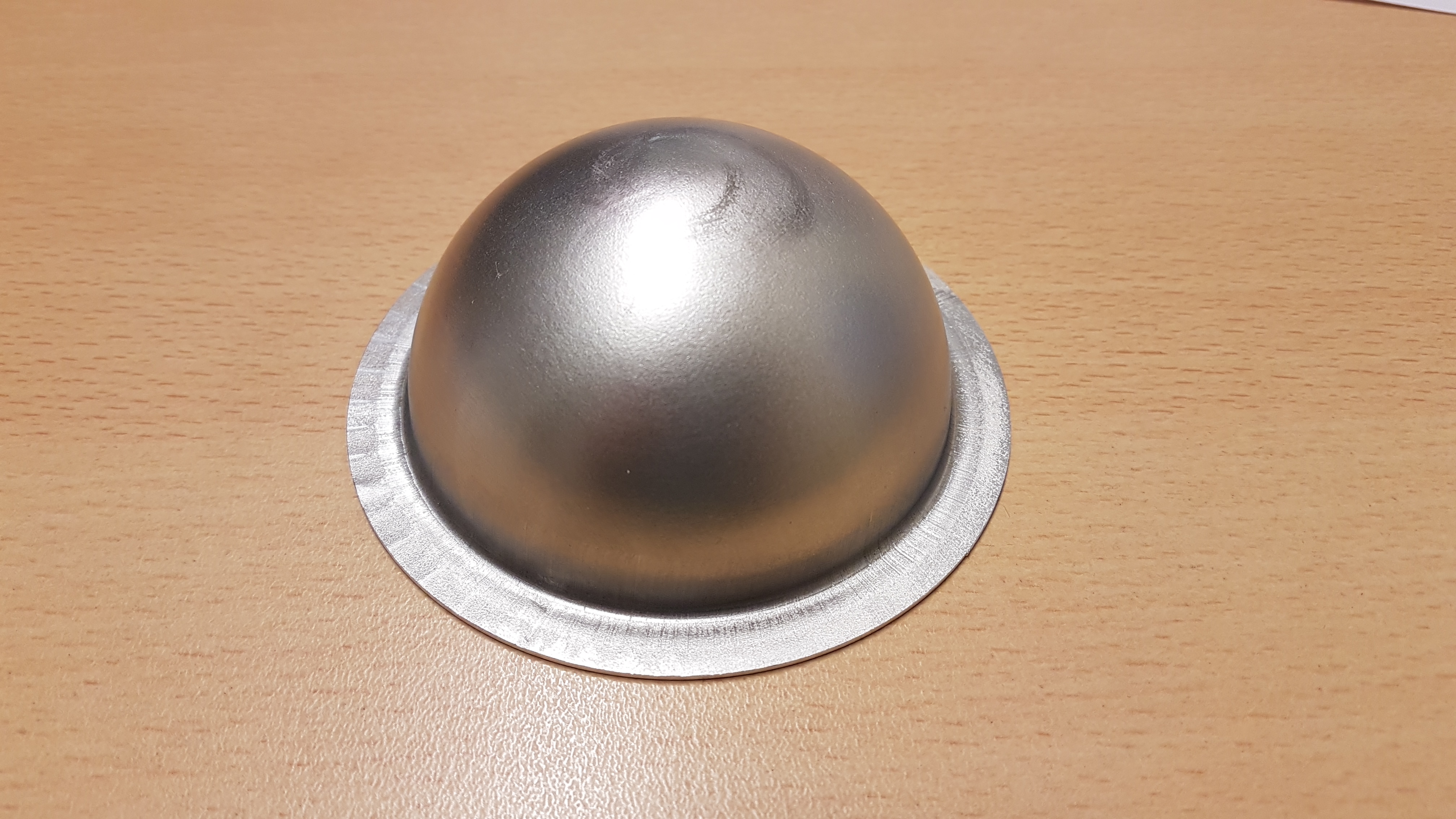Analysis and Annealing of Aluminium Alloys

Peak Design Ltd is a small design house based in Matlock, Derbyshire, which produces original designs for a variety of meteorological instruments. Founded in 2003 by designer John Wood, the company’s main focus is on creating instruments that measure solar radiation for solar power studies, climate research, meteorology and crop science.
The Challenge
Peak Design approached us to analyse hemispherical aluminium samples after encountering a problem with the material splitting during the manufacture of a particular component.
‘We had been struggling with the manufacture of some deep-drawn pressings, due to uncertainties with material suppliers, and inexperienced press workers,’ Mr Wood explained. ‘This meant that the pressings were splitting, and production was at a standstill.’
Being able to identify exactly why the problem was occurring was an essential first step to rectifying it, and the company began by asking us to determine if the correct grade and heat treatment was being used during manufacture. In addition, we were asked to determine the appropriate heat treatment procedure for the full annealing of a different grade of aluminium alloy which is more readily available.
What We Did
Our work on this project comprised three main phases. In the first phase, we used the industry-standard Cambridge Engineering Selector software to determine the best aluminium alloys that could be used to manufacture the component using the current process.
The next phase of our work involved conducting a comprehensive chemical analysis of the material in the split samples to identify its precise elemental composition, and our researchers used a SPECTROMAXx Spark OES analyser for this task.
The third and final phase of our work focused on carrying out tensile and hardness tests on the alternative grade of aluminium alloy that the company was interested in using. Samples of this material were CNC machined and annealed under a variety of conditions, and the results of this testing were analysed.
What We Discovered
Our analysis pertaining to material selection found that the alloy already being used by Peak Design was the best of all available options. We did identify three other alloys which could potentially be used as alternatives, but none of them were quite as suitable as the material in current use by the company.
The chemical analysis of the split deep-drawn pressings revealed that, whilst the elemental composition of their material was within specification for the grade, it did contain a number of impurities. Our analysis specified exactly which elements were present, and in what quantities, and highlighted one particular impurity that was approaching the maximum level.
Finally, our research into determining the most effective process for annealing a more readily available grade of aluminium alloy enabled us to provide Peak Design with precise data which illustrated, in quantifiable terms, how the material had fared under the various experimental conditions that had been applied.
How We Helped
Presenting these findings to Peak Design made it possible for the company to see why the problematic pressings were splitting, and to take appropriate action so that production of this vital component could continue.
‘SHU materials lab was able to assist in identifying and characterising the material the subcontractors were using (it wasn't the right material grade), and in investigating heat treatments to produce a suitably ductile material from the readily available alloys,’ Mr Wood said. ‘This has given me a better understanding of the materials requirements, enabled a different and more reliable supply of material, and got production back up and running.’
For further information, please contact us on 0114 225 3500 or meri@shu.ac.uk
